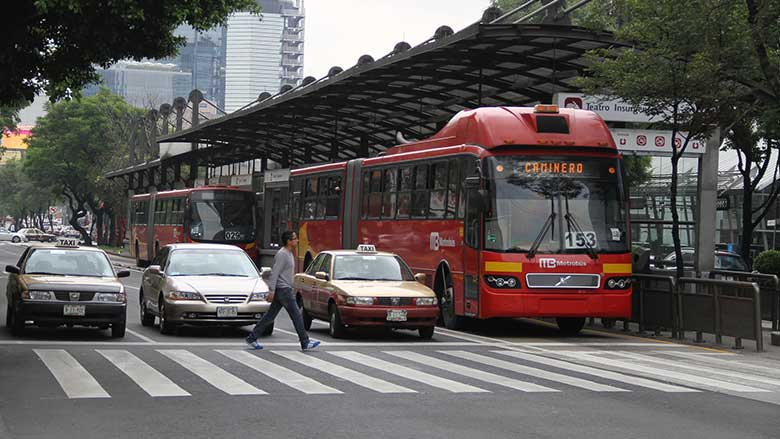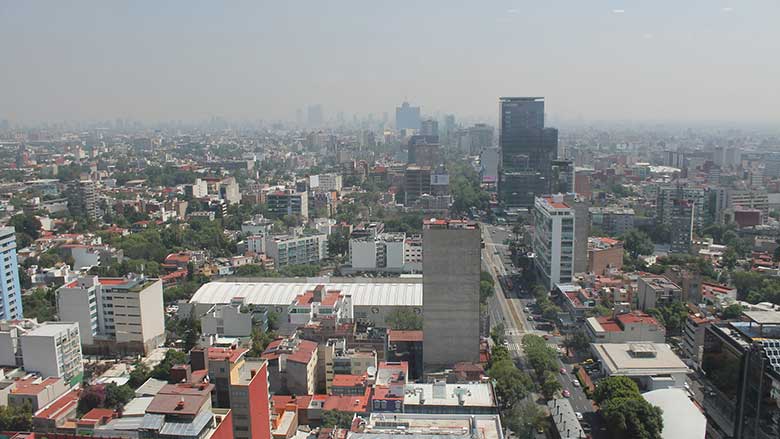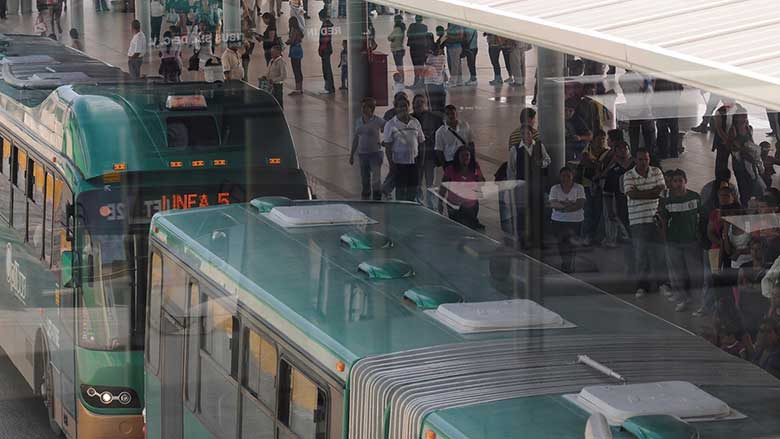Challenge
Over the past 25 years, Mexico faced an intense urbanization process with unsustainable land-use and urban-form patterns leading to a twofold increase in its urban population and a sevenfold increase in its urban footprint. This trend affects the form and functioning of the nation’s cities as well as the population’s mobility patterns. Low residential density and high downtown employment density, still prevalent in most Mexican cities, create long commutes. In addition, Mexico has experienced a significant increase in private car ownership. Urban sprawl and higher motorization rates resulted in more and longer trips, particularly motorized trips, and led to an increase in transport-related emissions.
Mexico is among Latin America’s most carbon-intensive economies, and its transport sector is one of the main causes. The vehicular fleet is expected to increase from 35 to 70 million units as of 2030. To address this trend, the government of Mexico is promoting a more sustainable urban mobility model for the country.
Approach
In 2008, the Mexican federal government created a program to support urban mass-transit projects—Programa Federal de Apoyo al Transporte Urbano Masivo (PROTRAM)—aimed at addressing greenhouse gas emissions through better integration of a full array of mobility solutions in urban development and transport plans, beginning with four Mexican metropolitan areas, Ciudad Juárez, Monterrey, León, and Puebla. Using financing from the Global Environment Facility (GEF) and an active Urban Transport Transformation Program (UTTP) loan from the World Bank, the GEF Sustainable Transport and Air Quality Program (GEF-STAQ) has contributed to Mexico’s effort to improve transit infrastructure and service provision options to capture current and future potential private motor-vehicle users. This contribution was made through a combination of instruments: the GEF-STAQ financed studies and infrastructure works and UTTP financed the acquisition of rolling stock for new mass-transit corridors.
The Bank’s support was instrumental in bringing innovation to the GEF–STAQ grant design and in combining approaches that could broaden project impacts. Using a holistic intervention approach for the sector, the GEF-STAQ focused on financing pre-investment studies for bus rapid-transit (BRT) corridors and for complementary interventions in nonmotorized transit (NMT), integrated transport plans, and urban freight logistics.



